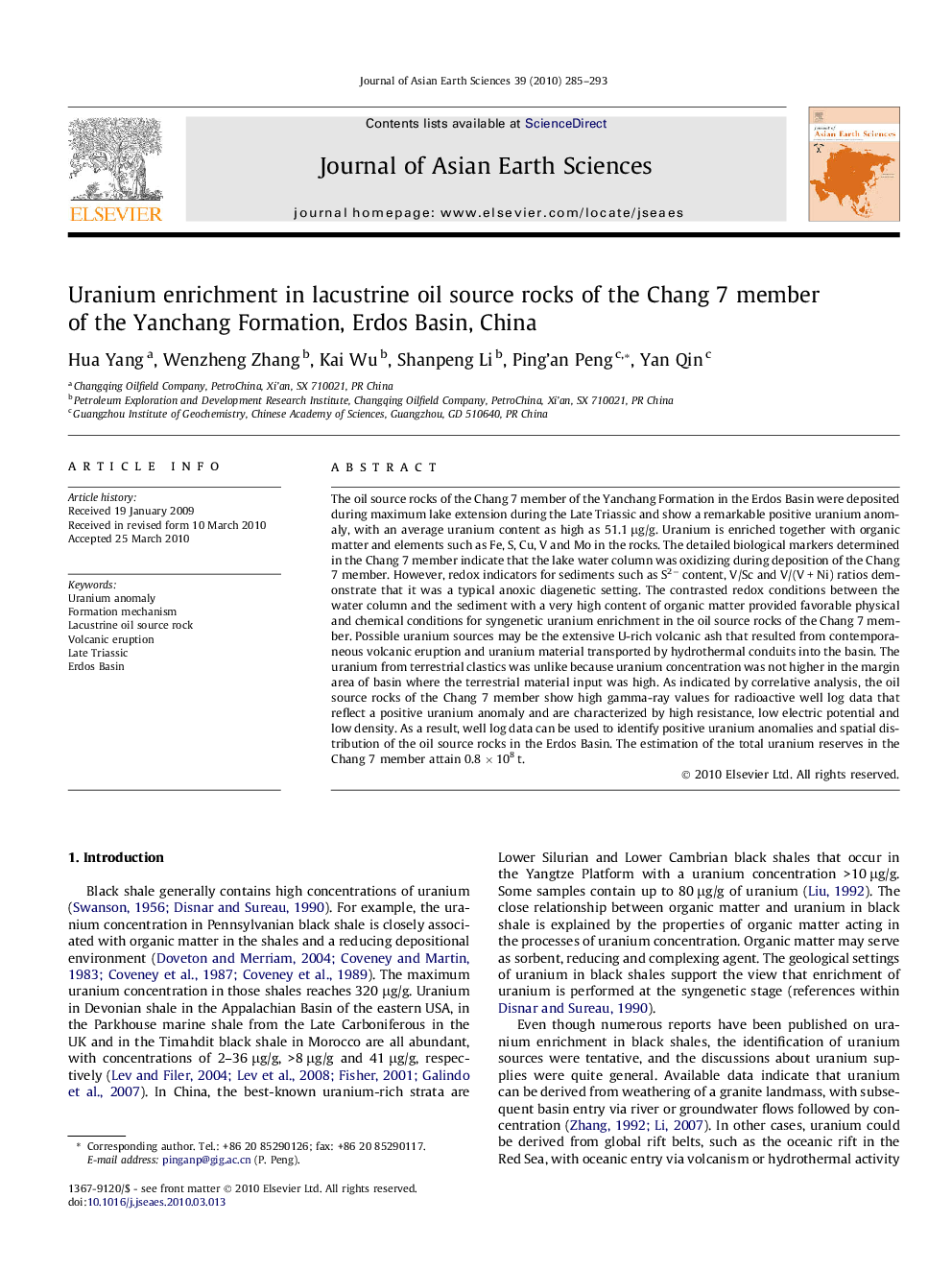| Article ID | Journal | Published Year | Pages | File Type |
|---|---|---|---|---|
| 4731984 | Journal of Asian Earth Sciences | 2010 | 9 Pages |
The oil source rocks of the Chang 7 member of the Yanchang Formation in the Erdos Basin were deposited during maximum lake extension during the Late Triassic and show a remarkable positive uranium anomaly, with an average uranium content as high as 51.1 μg/g. Uranium is enriched together with organic matter and elements such as Fe, S, Cu, V and Mo in the rocks. The detailed biological markers determined in the Chang 7 member indicate that the lake water column was oxidizing during deposition of the Chang 7 member. However, redox indicators for sediments such as S2− content, V/Sc and V/(V + Ni) ratios demonstrate that it was a typical anoxic diagenetic setting. The contrasted redox conditions between the water column and the sediment with a very high content of organic matter provided favorable physical and chemical conditions for syngenetic uranium enrichment in the oil source rocks of the Chang 7 member. Possible uranium sources may be the extensive U-rich volcanic ash that resulted from contemporaneous volcanic eruption and uranium material transported by hydrothermal conduits into the basin. The uranium from terrestrial clastics was unlike because uranium concentration was not higher in the margin area of basin where the terrestrial material input was high. As indicated by correlative analysis, the oil source rocks of the Chang 7 member show high gamma-ray values for radioactive well log data that reflect a positive uranium anomaly and are characterized by high resistance, low electric potential and low density. As a result, well log data can be used to identify positive uranium anomalies and spatial distribution of the oil source rocks in the Erdos Basin. The estimation of the total uranium reserves in the Chang 7 member attain 0.8 × 108 t.
